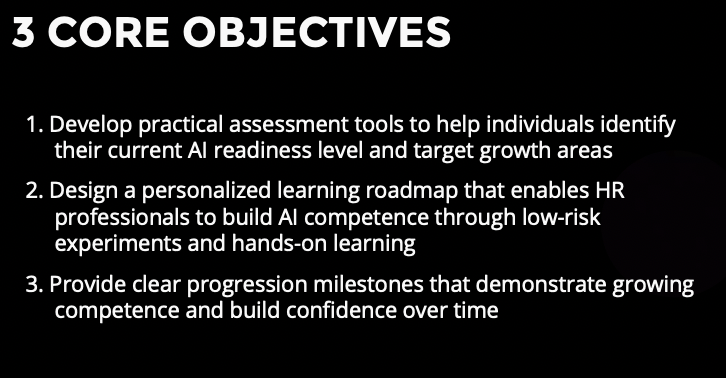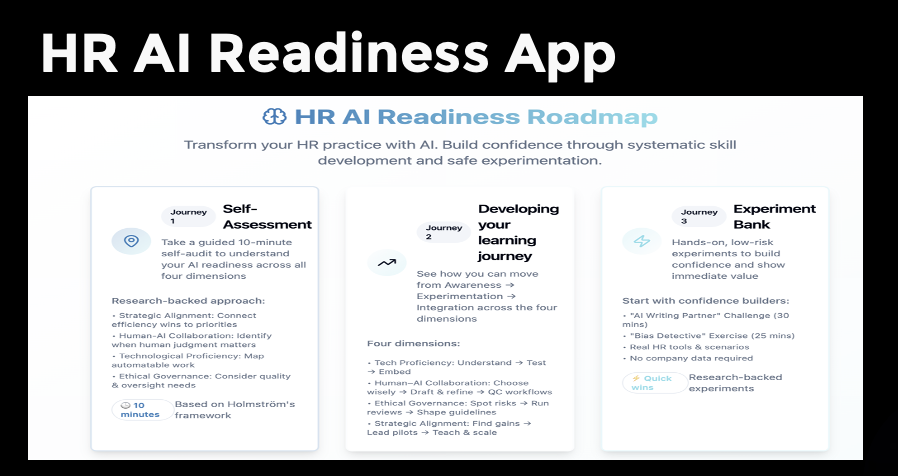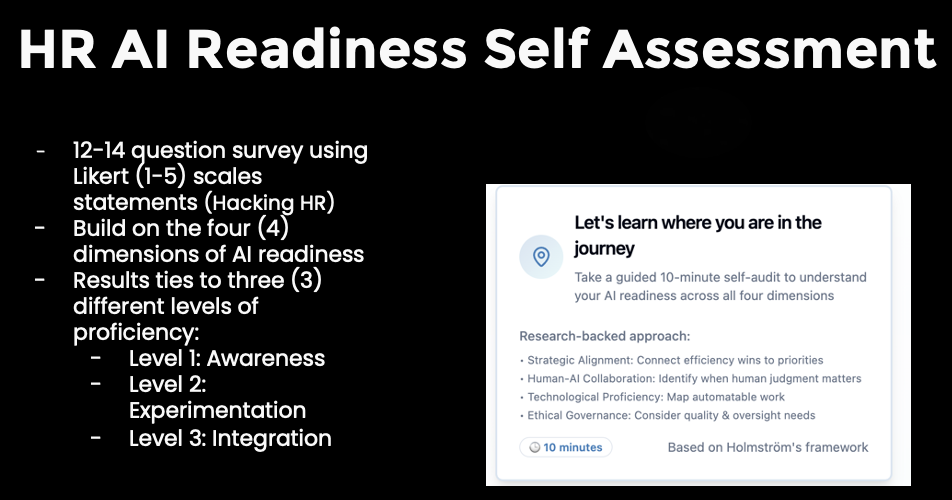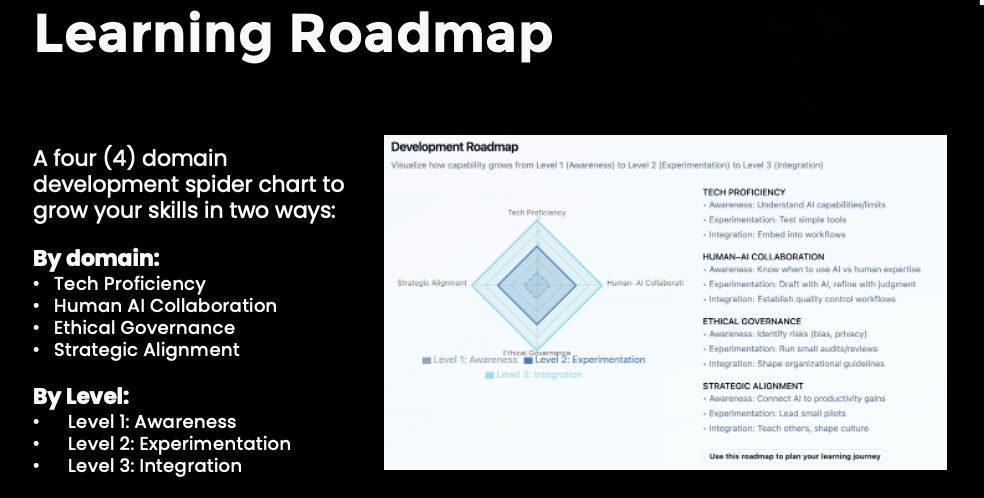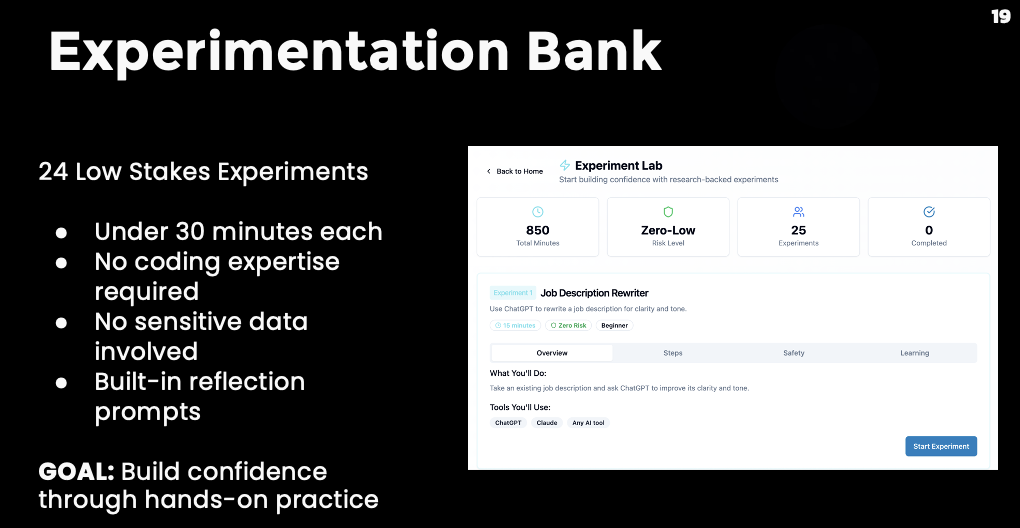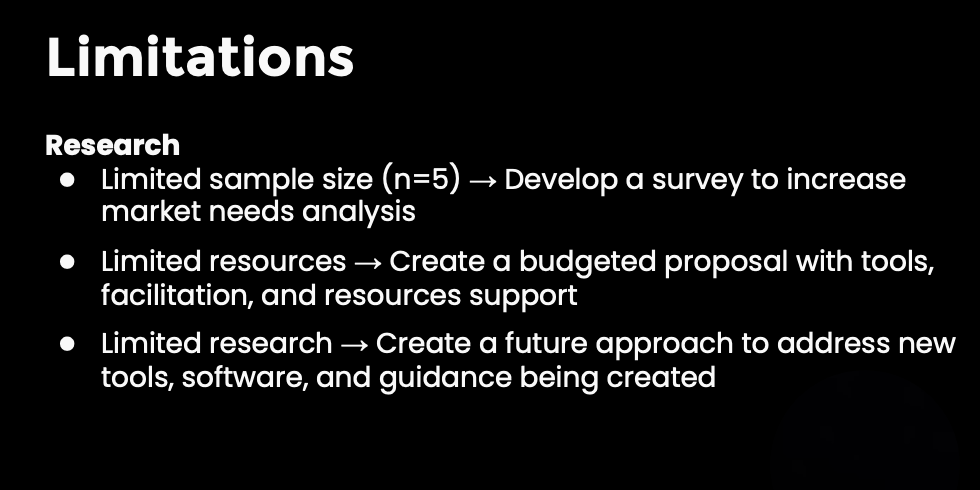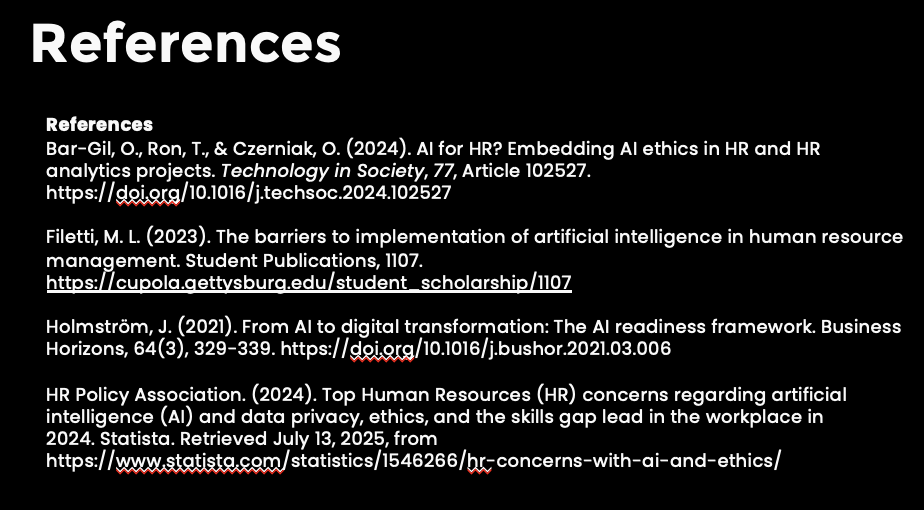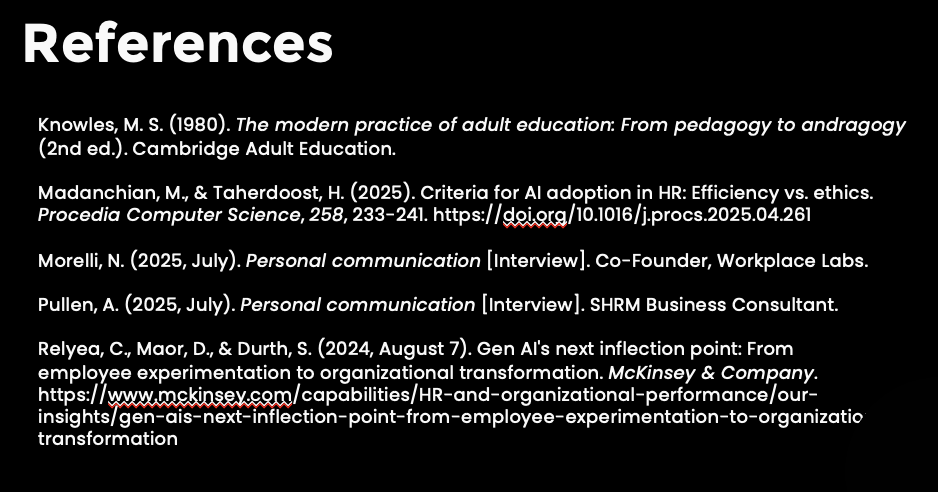
Photo by Christina Morillo
AI Readiness for HR Professionals
This non-practicum approach focuses on how to gradually build confidence and competency in HR professionals for small businesses (under 100 full-time employees) by developing a framework, a development map, and an exercise bank.
-
Today, AI readiness is a top topic with senior HR Leaders. According the latest survey by the Society of Human Resources (SHRM), 90% of CHROs believe AI will play a big role this year.
And from a practitioner, 49% believe their career progression is at risk unless they too gain AI skill.
Yet, most small business HR professionals are constrained by budget, time, resource, and size to fully dedicate to AI learning. -
Through research and practitioner interviews, developed an evidence-based three-prong approach to help HR professionals build confidence.e
Prong 1: Self Assessment
12-14 Likert-style questionnaire to understand your level of proficiency in AI Readiness
Prong 2: Learning Roadmap
A four (4) domain development spider chart to grow your skills in two ways: domain and level.
Prong 3: Experimentation Bank
24 Low-Stakes Experiments designed to build confidence through hands-on practiceUnder 30 minutes each
No coding expertise required
No sensitive data involved
Built-in reflection prompts
-
By implementing our recommendations, The Poughkeepsie School Systems can expect to see the following impact:
Year 1: Foundational BuildingImproved resource access: 85% of NSLP students gain reliable internet and technology access
Enhanced engagement: Culturally responsive curriculum increases classroom participation
Reduced barriers: Community partnerships remove external obstacles to learning
Year 2: Performance Breakthrough
40% reduction in achievement gap between NSLP and non-NSLP students
65% NSLP cohort proficiency in Grade 12 mathematics (significant improvement from baseline)
Increased college readiness: More students prepared for post-secondary mathematics requirements
Reduced teacher turnover saving $440,000-600,000 annually in replacement costs

